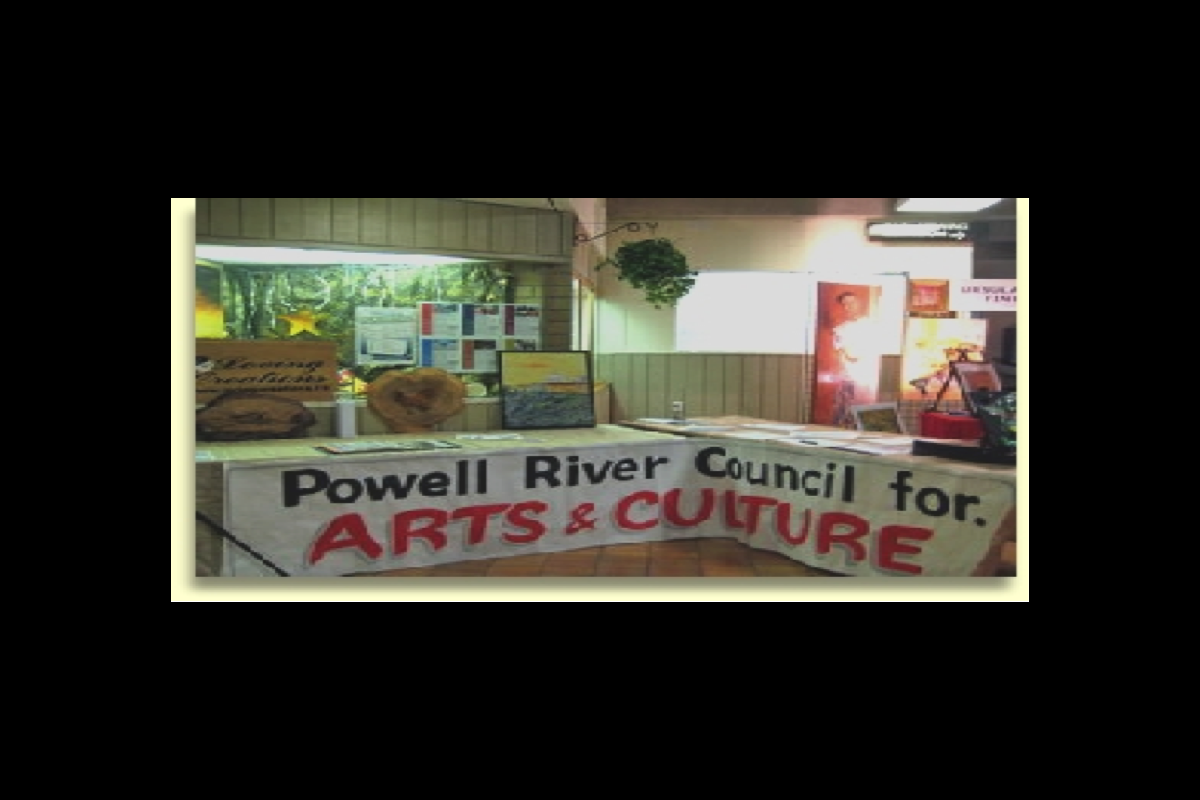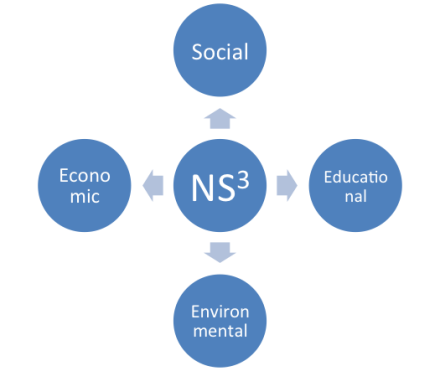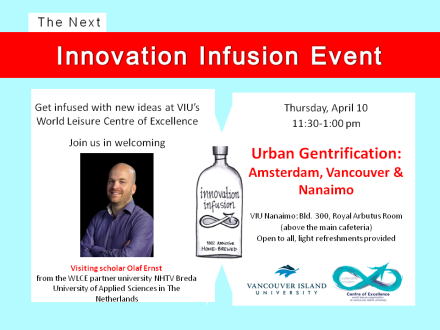
Arts & Culture Sustainability in Powell River
At the end of the field experience where we met with representatives from the community, local businesses and the local government, to know the real challenges the region faced towards sustainability, I decided to focus on the sustainability of arts & culture in the Powell River region and how it could be sustained for long term development. While writing the report on arts and culture, I found a similar case study on the Town of Black Mountain in North Carolina as it has the similar traits and character that of Powell River, which the city can identify with and consider it as an example.
Black Mountain is a small community town with a population of approximately 15,000 and a per capita income of $20,510. It is situated in the foothills of the Blue Ridge Mountains. The community has a rich history as a centre for arts, music and drama. Black Mountain College was opened in 1933 as an experiential school in interdisciplinary education, the college became a centre of learning for intellectuals, artists, musicians who came to the mountains of Western North Carolina. Several world renowned artists such as Buckminster Fuller, Merce Cunningham and Josef Albers taught at this college. However in the 1950’s many of the artists and intellectuals had moved to the West Coast and in 1956 Black Mountain College closed its doors. Throughout the 1960’s and 1970’s Black Mountain struggled and the downtown was full of dilapidated buildings. During the 1980’s an injection of funding from the Governor’s community of excellence program allowed the community to invest in re-establishing the downtown. Next came the investment in the art and culture aspect as the Town’s strategy was to recognise the importance of art and culture to attract tourists and potential investors into the community hence two key decisions was taken first to provide building space for the Black Mountain Centre for Arts and secondly to reduce the centre’s construction debt.
While in the 1990’s when the local government was looking for new office space they noticed that the old town hall needed a substantial repair rather than constructing a new building. They purchased it from the city hall for their new offices and also saw a golden opportunity to help the local black mountain arts group. Thus the old town hall was sold to a group of ad – hoc group of artists and local business people. This enabled the arts group in 1995 to become a formal non profit organization called the Black Mountain Centre for the Arts and campaigned for the renovation of the building. The regional govt stepped in with the necessary loan and overall the group raised $ 1.2 million for renovations which ultimately resulted in the opening of the new black mountain centre of Arts in the year 2000. Since its opening the centre for arts has attracted cultural enthusiasts from throughout the country. It exhibits concerts and galleries and showcases a range of local and international artists, musicians and theatre personnel’s. By the year 2002, the city had reached yet another milestone to ensure the continued viability the town paid off all the remaining debts. The centre now operated debt free thereby offering more cultural events to the public. Hence the City of Black Mountain is reaping the benefits of investing in art and culture. A recent study estimated the economic impact of Black Mountain to be $200 million annually through art & culture. The case study reflects the Public / Private partnerships that led to the creation of Arts in the city and elevated the role of arts group in the community, providing with an identity and a focus. The case study also reflects that investing in art and culture can be a driver of economic development in the region which has led to increase in tourism, development of small art based business and a centre of attraction for the residents who want to associate themselves with art and culture in the Black Mountain region (Jackson, 2002). The case study reflects that how small community towns like Black Mountain can reinvent itself through art & culture. Hence the field trip had given us an opportunity to understand practically the sustainable issues in small community towns like Powell River and the regions of the Sunshine Coast.
By Pratik Chakravarty
At the end of the field experience where we met with representatives from the community, local businesses and the local government, to know the real challenges the region faced towards sustainability, I decided to focus on the sustainability of arts & culture in the Powell River region and how it could be sustained for long term development. While writing the report on arts and culture, I found a similar case study on the Town of Black Mountain in North Carolina as it has the similar traits and character that of Powell River, which the city can identify with and consider it as an example.
Black Mountain is a small community town with a population of approximately 15,000 and a per capita income of $20,510. It is situated in the foothills of the Blue Ridge Mountains. The community has a rich history as a centre for arts, music and drama. Black Mountain College was opened in 1933 as an experiential school in interdisciplinary education, the college became a centre of learning for intellectuals, artists, musicians who came to the mountains of Western North Carolina. Several world renowned artists such as Buckminster Fuller, Merce Cunningham and Josef Albers taught at this college. However in the 1950’s many of the artists and intellectuals had moved to the West Coast and in 1956 Black Mountain College closed its doors. Throughout the 1960’s and 1970’s Black Mountain struggled and the downtown was full of dilapidated buildings. During the 1980’s an injection of funding from the Governor’s community of excellence program allowed the community to invest in re-establishing the downtown. Next came the investment in the art and culture aspect as the Town’s strategy was to recognise the importance of art and culture to attract tourists and potential investors into the community hence two key decisions was taken first to provide building space for the Black Mountain Centre for Arts and secondly to reduce the centre’s construction debt.
While in the 1990’s when the local government was looking for new office space they noticed that the old town hall needed a substantial repair rather than constructing a new building. They purchased it from the city hall for their new offices and also saw a golden opportunity to help the local black mountain arts group. Thus the old town hall was sold to a group of ad – hoc group of artists and local business people. This enabled the arts group in 1995 to become a formal non profit organization called the Black Mountain Centre for the Arts and campaigned for the renovation of the building. The regional govt stepped in with the necessary loan and overall the group raised $ 1.2 million for renovations which ultimately resulted in the opening of the new black mountain centre of Arts in the year 2000. Since its opening the centre for arts has attracted cultural enthusiasts from throughout the country. It exhibits concerts and galleries and showcases a range of local and international artists, musicians and theatre personnel’s. By the year 2002, the city had reached yet another milestone to ensure the continued viability the town paid off all the remaining debts. The centre now operated debt free thereby offering more cultural events to the public. Hence the City of Black Mountain is reaping the benefits of investing in art and culture. A recent study estimated the economic impact of Black Mountain to be $200 million annually through art & culture. The case study reflects the Public / Private partnerships that led to the creation of Arts in the city and elevated the role of arts group in the community, providing with an identity and a focus. The case study also reflects that investing in art and culture can be a driver of economic development in the region which has led to increase in tourism, development of small art based business and a centre of attraction for the residents who want to associate themselves with art and culture in the Black Mountain region (Jackson, 2002). The case study reflects that how small community towns like Black Mountain can reinvent itself through art & culture. Hence the field trip had given us an opportunity to understand practically the sustainable issues in small community towns like Powell River and the regions of the Sunshine Coast.




